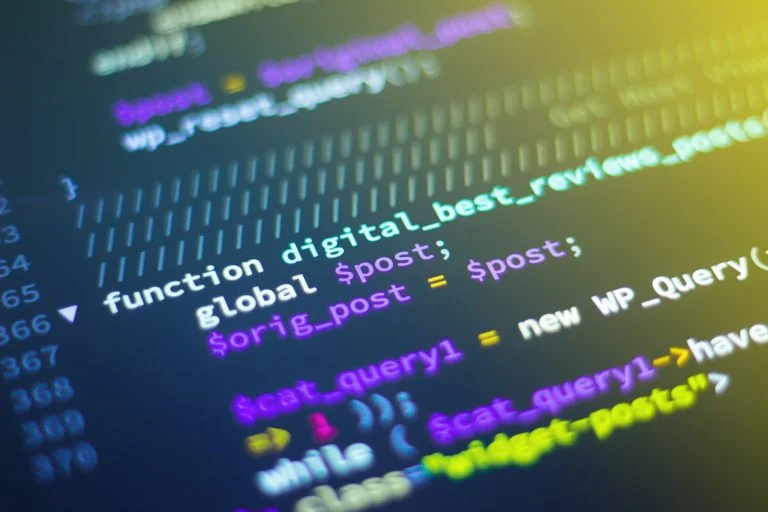Since the introduction of mobile apps in the first PDAs, mobile app development has skyrocketed. Applications have nearly become a part of our life, with roughly 3 million apps accessible in the Google Play Store and over 250 million app downloads each day, according to the latest estimates.
It is an understatement to say that mobile app development has become so popular in today’s digital world that it has spawned its own speciality business. Since the introduction of mobile apps in the first PDAs, their popularity has skyrocketed. Applications have nearly become a part of our life, with roughly 3 million apps accessible in the Google Play Store and over 250 million app downloads each day, according to the latest estimates.

1. Ideation & Discovery
Everything is driven by an idea. Apps, like anything else, start with a concept. An app’s foundations are constructed on the foundations of a concept. In-depth study and planning are used to back up ideas. You must ask yourself some basic questions since they will form the foundation of the app. Generally, you should be asking yourself questions like the ones listed below.
• What is the primary purpose of this app?
• What is the benefit of the consumer using this app?
• What end-user solutions would this app be able to provide?
This stage of idea generation and discovery also includes an investigation. You should not just focus on your own ideas, but also consider your rivals’ offerings.
• Do they provide a superior solution?
• Are they more practical?
• Is your app superior to theirs?
• Are they for a fee or are they available for free?
A thorough examination will give you a deep understanding and reveal various additional areas of app development that you may have neglected. It will offer you information on the app’s ROI (Return on Investment), budget, resources, and finances, among other things.
2. Designing a Prototype
After you’ve decided on the app you want to make and completed all of your preliminary research, the following step is to create the app’s first graphics. You can draw a rough sketch of how the app will appear or list the app’s main features. You may make a storyboard or a process chart to get a visual representation of your programme. This is the stage where the app’s main features start to emerge in greater depth, and all of your mobile app concepts take the form of a visual. You begin to see parts of the app clearly, such as:
• When the user selects a button, a series of displays appear.
• Which design aspects should you include in your app?
• What functionalities, buttons, and content should be on the app’s main page?
• Designing the app’s navigation buttons, text, and pages.
• The app’s backend and frontend procedures.
You’ll need to develop a rough manual for this programme and may need to hire a technical writer at this point. It will provide you with insight into the operation of your app or alert you to any potential flaws, gaps, or faults that you may have overlooked. Not only will documenting the many components of the app you’re building help you, but it will also help you design a wireframe of the completed app as it would appear on a mobile device.
3. Development and Testing
The actual creation of the app is the next step in the mobile app development process. You shape your prototypes in this step to build the actual app. In creating the app, your team of software specialists should take into account all functioning prototypes, app functionality, drawings, storyboards, and workflow charts. Frontend designs and backend integration are generally involved. The most important thing to perform at this stage is to connect frontend design to backend procedures where data is acquired, saved, and processed. In general, it entails:
Frontend development:
· Develop app screens.
· Clickable buttons.
· Navigation pages.
· Integration with backend processes.
Backend development:
· Data Storage & Retrieval.
· Backend Server & Database Management.
App testing is frequently done in tandem with mobile app development. At this stage, bugs and faults are detected and rectified. Several tests and quality assurance guidelines are performed on the app. The app’s viability is assessed, and whether it is practical or not is decided.
4. Prototype for a Touch Experience
Only when consumers have a tactile encounter with an app can they get a sense of its functioning. At this stage, a prototype of the app is generally created and distributed to users so that they may test it out as end-users would and provide feedback. This is the initial stage, during which the app design takes shape in the imaginations of users and they can actually utilize the app. Their suggestions will aid app developers in fine-tuning the app’s interfaces and platforms.
• Experimenting with different screen resolutions and sizes.
• Navigation and buttons
• User data privacy.
• Application platforms
• Testing in beta.
5. Coding and Design
After you’ve conducted user testing on your app, the next step is to code it and create the app’s UX (User Experience) interface. To construct the app, you’ll need the help of UX Designers, Coders, Programmers, and Designers at this point. The app’s interfaces, screens, buttons, links, and other design components will be developed by the UX Designer. It will assist app developers in gaining a general understanding of how app development is carried out. This stage will address issues such as:
• How will pages interact with one other?
• A visual representation of how the app will operate
• How easy is it to navigate the pages?
• Is the user interface simple or complex?
When developing app interfaces, it’s critical to keep the end-user in mind, because the app’s simplicity of use is crucial for the user, and the app’s interfaces and UX should be simple enough for the user to solve the problem for which the app was created.
6. Testing of App
After you’ve finished developing your app, you should always test it. It usually entails enabling a small group of target consumers to test your software. You’ll be able to see how people view your app and whether or not they can utilize it effectively. It entails evaluating an app’s functionality, simplicity of use, interface design, UX layout, and overall user experience. It entails:
UAT (User Acceptance Testing): A small group of target customers is given the app to test. Users learn about typo problems, design faults, ease of use, security loopholes, layout modifications, and other issues through this form of testing. App developers may provide questions, create a questionnaire, or conduct a poll to determine how users feel about the app’s performance.
Beta Testing: In this case, the software is available to all users, and their feedback is crucial. The app developers provide users with a beta version of the app during this testing. The users offer developers detailed input. The information is then used to improve the app based on the comments gained during beta testing.
7. Publishing the App
Your app has now been cleared for final launch once all of the tests have been completed. You may distribute the software through online mobile app shops such as Apple Inc.’s App Store and Google Play Store (Android). Before you may offer your software in their separate stores, you must follow their rules and agree to their terms and conditions.
The mobile app development process you started ends with the publication of your app. It’s the last phase in the app development process. You’ll need to use media campaigns to publicize a launch date. You’ll need to hire marketing and advertising teams, create social media campaigns, use word-of-mouth promotion, or send emails to people and organizations that are interested in your product.
8. Maintenance & Updates
Maintenance and app updates, on the other hand, are the last stages of app creation. In this phase, you must be proactive and align user engagement with frequent app upgrades. The app must be frequently updated with software additions, bug patches, design implementation, and many other variables, as well as user feedback. The genuine development of an app occurs only after this final phase, and app development becomes a dynamic process.

